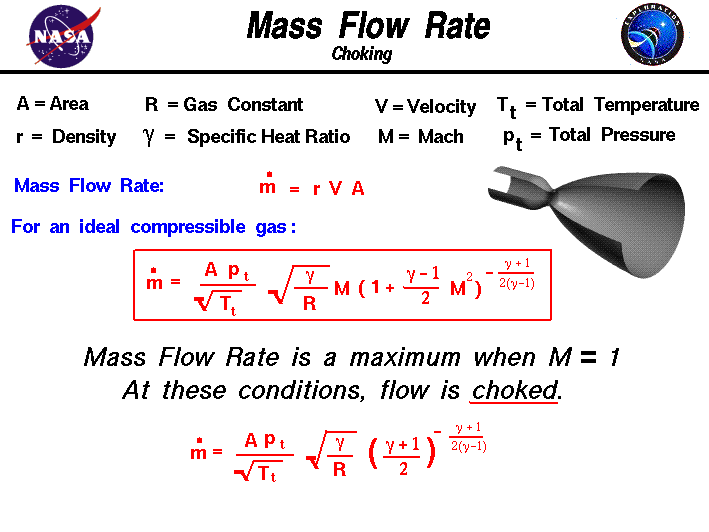According to st. Robert's Law, propellant burn rates increase with pressure. When an SRB is ignited, propellant starts to burn, making the pressure rise in the combustion chamber. The flow through the nozzle transitions from subsonic to sonic and becomes choked. At this point, increasing pressure only increases the structural load on the combustion chamber walls without any performance gains. No more mass flow can be achieved, but nothing keeps more (gaseous) mass from being injected due to burning.
As the burn rate never drops with pressure, at best it plateaus, it would seem to be that the burn rate and combustion chamber pressure would interact in a positive feedback loop, ever-increasing the pressure until destruction.
Where am I going wrong? What keeps the burning / the pressure stable once choked flow is achieved?
The only thing I found online so far is the image below (source). This however, seems to assume the flow at the nozzle is not choked. When choked flow is to be reached, I assume the orange curve would reach a maximum and would stay constant at increased pressure. The entire curve would have to lie below the burn rate curve, again leading to a positive feedback loop.
The best explanation I can come up with is the situation shown below. In the second equilibrium point, choked flow is reached and the burn rate is stable, I guess. Is this how SRB's work? If so, how is the first equilibrium point overcome? Also, if operating in the second equilibrium point and whatever disturbance kicks up the pressure a bit, what is the mechanism driving it back?


